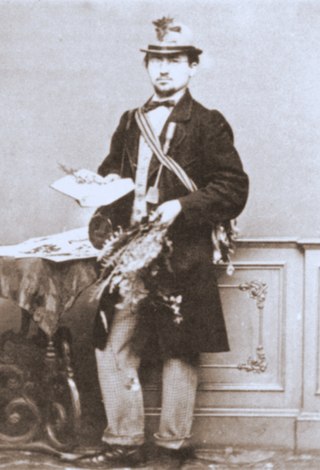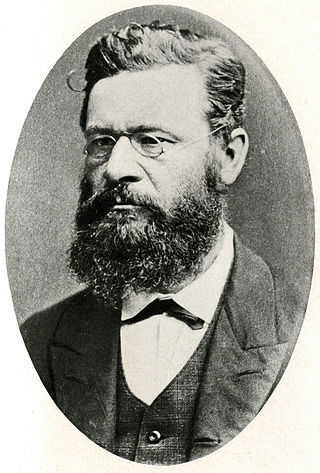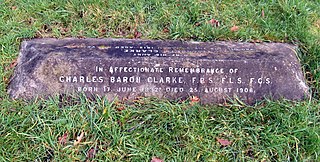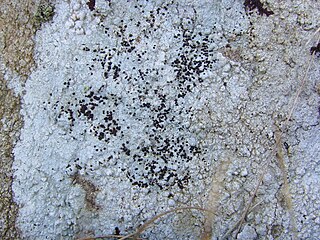
Carl Ernst Otto Kuntze was a German botanist.

Petter Adolf Karsten was a Finnish mycologist, the foremost expert on the fungi of Finland in his day, and known in consequence as the "father of Finnish mycology".

Pier Andrea Saccardo was an Italian botanist and mycologist.

Charles Horton Peck was an American mycologist of the 19th and early 20th centuries. He was the New York State Botanist from 1867 to 1915, a period in which he described over 2,700 species of North American fungi.

Charles Baron Clarke was a British botanist. He was born at Andover, the eldest son of Turner Poulter Clarke. He was educated at King's College School, London, and at Trinity and Queens' Colleges, Cambridge. He began the study of law at Lincoln's Inn in 1856 and was called to the bar in 1860. He lectured in mathematics at Presidency College, Calcutta, from 1857 to 1865. Clarke was Inspector of Schools in Eastern Bengal and later of India, and superintendent of the Calcutta Botanical Garden from 1869 to 1871.

Herteliana is a genus of lichenized fungi in the family Ramalinaceae.
Lopezaria is a genus of lichenized fungi in the family Ramalinaceae.
Dennisiodiscus is a genus of fungi in the family Dermateaceae. The genus contains 10 species.
Mobergia is a genus of lichen-forming fungi in the family Physciaceae.
Feigeana is a genus of lichenized fungi in the family Roccellaceae. A monotypic genus, it contains the single species Feigeana socotrana, first reported from Yemen in 1995.
Rostafinskia is a genus of fungi in the Ascomycota phylum. The relationship of this taxon to other taxa within the phylum is unknown, and it has not yet been placed with certainty into any class, order, or family.
Delpinoina is a genus of fungi within the Ascodichaenaceae family.
Lahmiomyces is a genus of fungi in the Helotiales order. The relationship of this taxon to other taxa within the order is unknown, and it has not yet been placed with certainty into any family. This is a monotypic genus, containing the single species Lahmiomyces piceae.
The Lahmiales are an order of fungi in the Ascomycota, or sac fungi. The order has not been assigned to any class. The taxon is monotypic and contains a single family, the Lahmiaceae, which in turn contains the single genus Lahmia.
Cavaraella is a genus of fungi in the Rhytismatales order. The relationship of this taxon to other taxa within the order is unknown, and it has not yet been placed with certainty into any family. This is a monotypic genus, containing the single species Cavaraella micraspis.
Boothiella is a genus of fungi within the Chaetomiaceae family. This is a monotypic genus, containing the single species Boothiella tetraspora.
Pasaccardoa is a genus of African plants in the family Asteraceae.
Wittmackanthus is a monotypic genus of flowering plants in the family Rubiaceae. The genus contains only one species, Wittmackanthus stanleyanus, which is found in Panama, Colombia, Ecuador, Peru and Guyana.
Albert Julius Otto Penzig, also referred to as Albertus Giulio Ottone Penzig was a German mycologist.
Franz Petrak was an Austrian-Czech mycologist.






